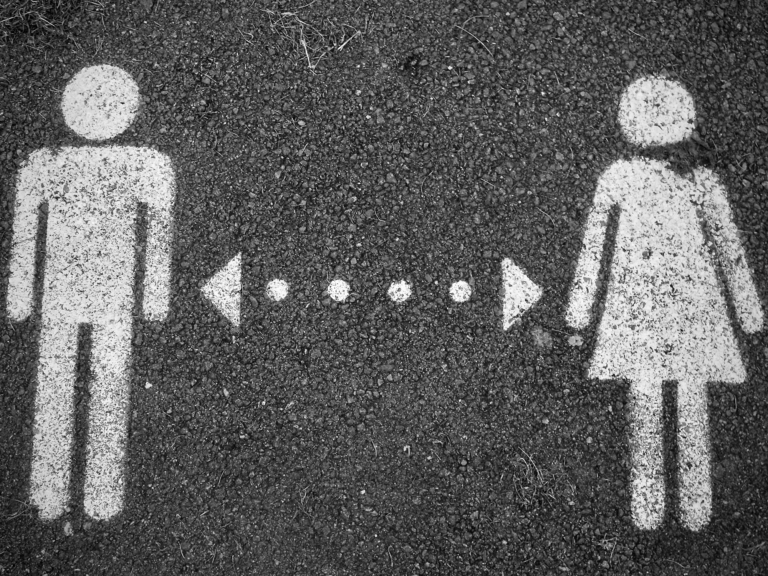Growing inequality in Denmark and Germany
Both Denmark and the UK were hard hit by the crisis of the 1970s and implemented significant labour market reforms in its wake. Germany was less strongly affected in the 1970s but, in contrast, suffered a major crisis in 1990 following the reunification of East and West Germany. This crisis, too, resulted in a wave of labour market reforms.
Following the most recent financial crisis, development on the labour market in the three countries has been largely uniform (Figure 1).
Figure 1. Unemployment among 15–64-year-olds, 1970–2020
Note: Germany means West Germany up to and including 1990. Source: OECD.
Unemployment is a factor that is extremely sensitive to market conditions, however. A look at prosperity measured as GDP per citizen instead reveals that development has been largely parallel in the three countries (Figure 2).
Denmark and Germany have been the two richest countries throughout the period, whereas the UK has been positioned slightly below these two and only marginally above the average level for the OECD countries.
Figure 2. GDP per citizen in 2015 dollars, 2017–20, adjusted for purchasing power
Note: Germany is taken to mean the unified Germany during the entire period. The numbers are taken directly from the OECD – comparable data for West Germany were not available. Admittedly, setting the level in the GDR as equal to the level in the Federal Republic does suggest that the estimated total level is too high. Source: OECD.
Looking at the distribution of incomes – inequality measured using the Gini coefficient – Figure 3 demonstrates clear convergence after the year 2000, i.e. the three countries move closer to each other. The convergence is caused by inequality rising in Denmark and Germany at the same time as it fell slightly in the UK. This development was preceded by the opposite situation in the 1980s and 1990s, where inequality increased sharply in the UK.
Figure 3. Income inequality measured using the Gini coefficient, 1980–2019
Note: Germany is taken to mean West Germany up to 1991. The data break in 2014 is attributable to a switch in source from the Luxembourg Income Study to Eurostat. It is therefore important to apply caution to any interpretation of the change in 2014 as the consequence of anything other than a change in methods. Linear interpolation has been applied between the observations. Income inequality is measured as the equivalised disposable household income for everyone in the population. The concept refers to allowance having been made for how many members of the household are to share in the income, and the effects of taxes and transfer income payments have also been included. The Western Europe series spans an ongoing, unweighted average of the Gini coefficient for the countries of Western Europe where data, including interpolation, are available at the time in question. These countries are: Austria, Belgium, Denmark, Finland, France, Germany, Greece, Iceland, Ireland, Italy, Luxembourg, the Netherlands, Norway, Spain, Sweden, Switzerland and the UK. Source: Luxembourg Income Study and Eurostat as well as own calculations.
The UK shows a deficit on the balance of payments
As regards the more general economic development there are, however, also areas where the three countries have come to differ more markedly. This applies, for example, with regard to their interaction with foreign countries.
Figure 4 presents the development in the surplus on the current account of the balance of payments. In the 1970s, Denmark showed a large deficit, while both Germany and the UK achieved a balance. A significant change took place as from the mid-1980s, however, and since the turn of the millennium, Denmark and Germany have built up solid surpluses on the balance of payments year by year, while the UK has experienced precisely the reverse.
Figure 4. Surplus on the current account of the balance of payments in percent of GDP, 1970–2020
Note: Data break for Denmark in 1975 as a result of a switch from the OECD to the World Bank as the source. Germany is taken to mean the unified Germany during the entire period. The numbers are taken from the World Bank (except for Denmark in 1970–94), but the German numbers are based exclusively on West German growth rates, and on the subsequent linking of these to the total German level in 1991. The data break is therefore attributable to this change in calculation method. This means that the figure contains an implicit assumption that the current account of the balance of payments in East Germany is equivalent to that in West Germany during the period up to 1991. Source: The World Bank and OECD.
There are many possible explanations for how Denmark and Germany can achieve such large surpluses in relation to foreign countries while the opposite applies to the UK. One such is that Danish and German industrial production have achieved greater success in globalisation than their British counterpart. Figure 5 demonstrates how the growth in value in industry has developed much more strongly in Denmark and Germany than in the UK.
Figure 5. Development in the growth of the value of industry, 1970–2018 in fixed prices; 1970 = 100
Note: Germany means West Germany up to 1990, after which it refers to the reunified Germany. Sources: Destatis, Statistics Denmark and the Bank of England.
Publications behind the article

Knowledge overview
Growing inequality in Denmark and Germany
Go to knowledge overview
Book
Welfare State and Population in Denmark Germany and the UK
Go to bookLatest releases on the same welfare topic

Knowledge overview
The intergenerational transmission of educational attainment among immigrants and their descendants is not significantly different from that among native Danes
December 2025

Research report
Left in Charge: Political Rule and the Rise of Local Welfare
December 2025

Research report
Effects of Higher Staff-Child Ratios in Danish Kindergartens
December 2025

Research report
Workplace Amenities and the Gender Pay Gap
December 2025





